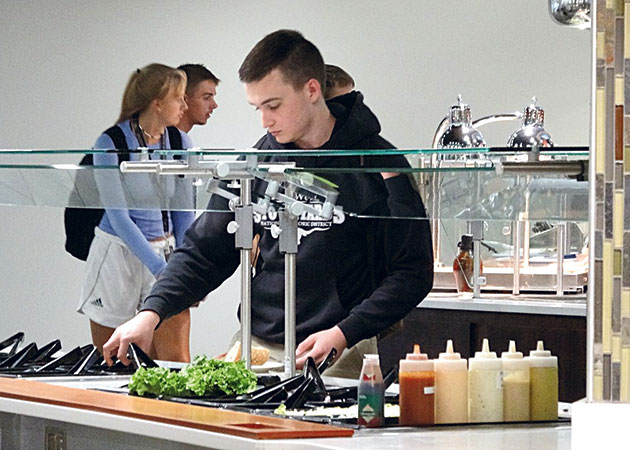Disruption may reign right now, but college and university foodservice leaders are busy strategizing for what the future may look like and how dining can continue to contribute to the campus experience, whatever form that might take. Here’s a quick look at trends and innovations some say will continue to shape or reshape programs in response to COVID-19.
Zia Ahmed, Senior Director of Dining Services, The Ohio State University
 Zia Ahmed“Ghost kitchens and everything around mobile ordering and delivery will be fast-tracked. They’re the future of foodservice, whether it’s QSR, campus dining or even fine dining. I also see mobile ordering and curbside pickup or delivery expanding to our university c-store operations as another way to reduce human interactions and touch points. Menu simplification will get more focus too — making menus more specialized and craveable but with reduced variety, based on the belief that better can be better than more. This is particularly important as mobile ordering grows, which demands menus that are easy to execute and manage for pickup and delivery. One more change that may be a long-term trend is offering prepared, blast-chilled meals that students can order remotely, pick up or have delivered, refrigerate and reheat in their rooms. We’ve started offering that, and it’s very popular. The students can get a few meals at a time, which again reduces the number of interactions they need to have with staff.”
Zia Ahmed“Ghost kitchens and everything around mobile ordering and delivery will be fast-tracked. They’re the future of foodservice, whether it’s QSR, campus dining or even fine dining. I also see mobile ordering and curbside pickup or delivery expanding to our university c-store operations as another way to reduce human interactions and touch points. Menu simplification will get more focus too — making menus more specialized and craveable but with reduced variety, based on the belief that better can be better than more. This is particularly important as mobile ordering grows, which demands menus that are easy to execute and manage for pickup and delivery. One more change that may be a long-term trend is offering prepared, blast-chilled meals that students can order remotely, pick up or have delivered, refrigerate and reheat in their rooms. We’ve started offering that, and it’s very popular. The students can get a few meals at a time, which again reduces the number of interactions they need to have with staff.”
Peter Testory, Director of Dining & Culinary Services, University of Wisconsin – Madison
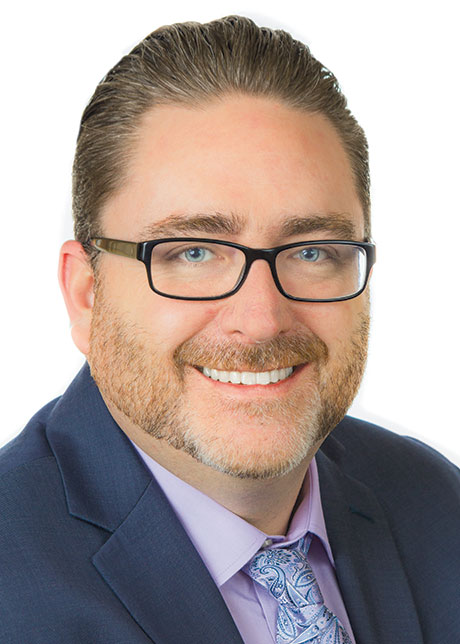 Peter Testory“The use of technology will continue to be fast-tracked. We offer mobile app ordering for pickup and delivery, and last November we piloted a new robot delivery program that’s been very successful, before and during COVID-19. We have a fleet of 30 robots, about half of which we’re using every day now and which are delivering as many meals as we’re currently serving in the marketplace. We’ll build on that because it enables self-isolating and social distancing. We also see this whole scenario, while incredibly disruptive, as an opportunity to step back and reevaluate what we’re doing and introduce new ideas. We’re using this gift of time to refresh the menu mix in all of our coffee shops; to research and collaborate with our Residential Life partners on special event planning; and to do a lot of research and data-based menu planning. Overall, technology will be up, and experience will be down. It could be a number of years before our marketplaces look like they did four months ago, so we’re trying to plan for that.
Peter Testory“The use of technology will continue to be fast-tracked. We offer mobile app ordering for pickup and delivery, and last November we piloted a new robot delivery program that’s been very successful, before and during COVID-19. We have a fleet of 30 robots, about half of which we’re using every day now and which are delivering as many meals as we’re currently serving in the marketplace. We’ll build on that because it enables self-isolating and social distancing. We also see this whole scenario, while incredibly disruptive, as an opportunity to step back and reevaluate what we’re doing and introduce new ideas. We’re using this gift of time to refresh the menu mix in all of our coffee shops; to research and collaborate with our Residential Life partners on special event planning; and to do a lot of research and data-based menu planning. Overall, technology will be up, and experience will be down. It could be a number of years before our marketplaces look like they did four months ago, so we’re trying to plan for that.
Rob White, President, Envision Strategies
“Some campus mobile app and delivery programs have been expanding their networks to let students use dining-plan dollars in off-campus 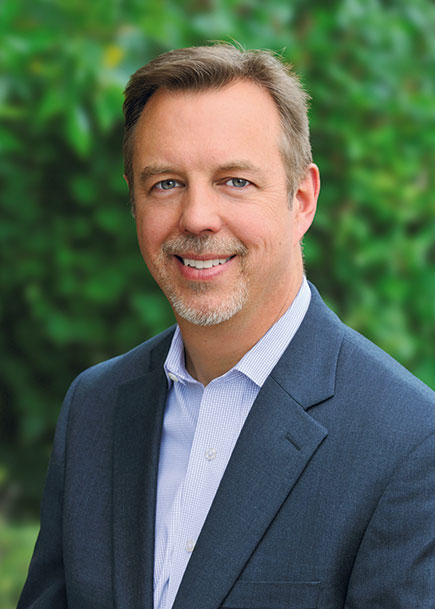 Rob Whiterestaurants, even restaurants in other cities. That’s really smart, and the type of thing that will accelerate innovative thinking around the fact that dining programs don’t have to just serve meals in order to be of value to students. There may be other services and types of support, from nutrition counseling to connecting with local restaurants, that programs can provide as part of serving the mission of their institutions. The really heads-up leaders are going to be those who figure out new ways to stay relevant during and after this period of disruption.”
Rob Whiterestaurants, even restaurants in other cities. That’s really smart, and the type of thing that will accelerate innovative thinking around the fact that dining programs don’t have to just serve meals in order to be of value to students. There may be other services and types of support, from nutrition counseling to connecting with local restaurants, that programs can provide as part of serving the mission of their institutions. The really heads-up leaders are going to be those who figure out new ways to stay relevant during and after this period of disruption.”
Eric Goodrich, Operations Project Manager, Rippe Associates
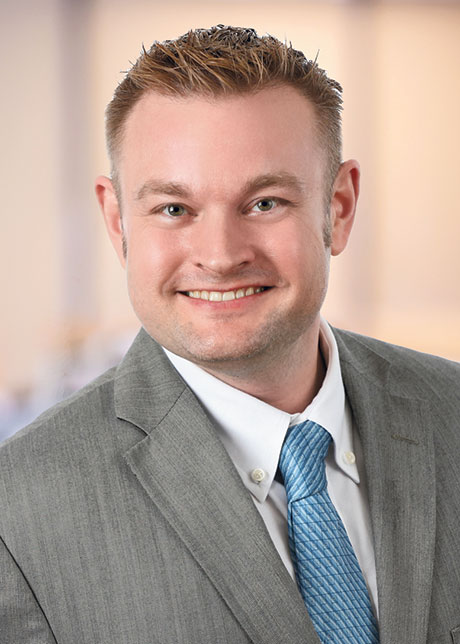 Eric Goodrich“On the menu side, if on-campus life returns this fall we may be dealing with commodity shortages that we’ve never seen, and the need for menu flexibility around that will be paramount. The whole idea of local procurement and farm-to-table will become much less of a hip, boutique way to market to students and more of a need-based reality. And prepared, grab-and-go convenience foods, which have been trending down, may trend back up. They may be more upscale in their delivery and style but could be a way for some schools to keep labor down and services up. On the facilities side, the fast-track push will be all around safety and sanitation. What kinds of things can you do to reduce human interactions and the amount of hand-to-object contact points? Things like automatic faucets and self-opening doors will be important, and we’ll see more focus on antimicrobial finishes as well as on robotic solutions that have been otherwise slow to gain traction. I also expect rapid redesign of self-serve stations, at a minimum to eliminate use of common utensils, as well as more schools integrating hand-washing stations at entrances to dining venues.”
Eric Goodrich“On the menu side, if on-campus life returns this fall we may be dealing with commodity shortages that we’ve never seen, and the need for menu flexibility around that will be paramount. The whole idea of local procurement and farm-to-table will become much less of a hip, boutique way to market to students and more of a need-based reality. And prepared, grab-and-go convenience foods, which have been trending down, may trend back up. They may be more upscale in their delivery and style but could be a way for some schools to keep labor down and services up. On the facilities side, the fast-track push will be all around safety and sanitation. What kinds of things can you do to reduce human interactions and the amount of hand-to-object contact points? Things like automatic faucets and self-opening doors will be important, and we’ll see more focus on antimicrobial finishes as well as on robotic solutions that have been otherwise slow to gain traction. I also expect rapid redesign of self-serve stations, at a minimum to eliminate use of common utensils, as well as more schools integrating hand-washing stations at entrances to dining venues.”
Orlynn Rosaasen, Director of Dining Services, University of North Dakota
 Orlynn Rosaasen“We’ve increased our focus on nonresidential, retail foodservice options in our new student union and a new branded concept planned for another campus building. Our first-year class continues to shrink, but our graduate program has been growing. We need convenient options for them and know that they are going to interact with our facilities differently. I also hope to fast-track development of a mobile app for pickup and delivery service, which we’ve been working on for the past year, and of cashierless micromarket options on campus.”
Orlynn Rosaasen“We’ve increased our focus on nonresidential, retail foodservice options in our new student union and a new branded concept planned for another campus building. Our first-year class continues to shrink, but our graduate program has been growing. We need convenient options for them and know that they are going to interact with our facilities differently. I also hope to fast-track development of a mobile app for pickup and delivery service, which we’ve been working on for the past year, and of cashierless micromarket options on campus.”
Rafi Taherian, Associate Vice President, Yale Hospitality
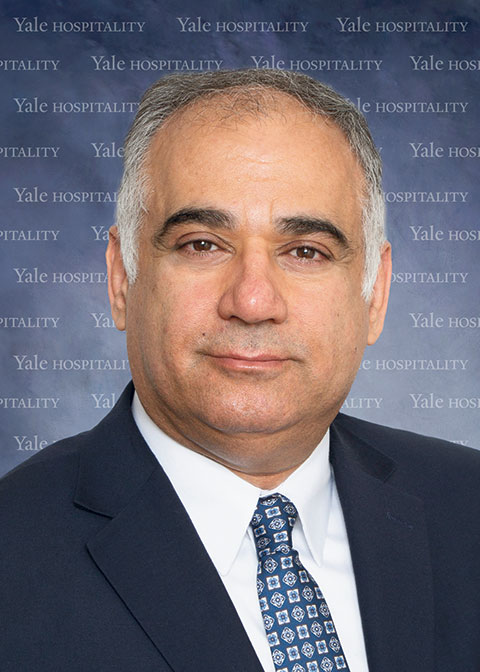 Rafi Taherian“One of the aspects of our programs that will be impacted, at least in the short term, is sustainability. With everything now being packaged in disposables for off-premises consumption, I’ve asked our Office of Sustainability for guidance on products that we should absolutely stay away from during this period of time and others that may be incrementally less bad. We need options, because there’s no guarantee that we’ll have sufficient access to any of it. We’re also using this time to focus on some of the system, infrastructure and process things that we always want to improve but rarely have time to get to. And we’re heavily involved in the planning of the return of our students to campus. Our hope is that we will create such a strong plan that our administrators are confident in returning our students, faculty and researchers to a safe environment to continue the kind of work that they were doing. It’s a really high responsibility for us to make sure that the type of research that’s done here continues. Humanity literally depends on it.”
Rafi Taherian“One of the aspects of our programs that will be impacted, at least in the short term, is sustainability. With everything now being packaged in disposables for off-premises consumption, I’ve asked our Office of Sustainability for guidance on products that we should absolutely stay away from during this period of time and others that may be incrementally less bad. We need options, because there’s no guarantee that we’ll have sufficient access to any of it. We’re also using this time to focus on some of the system, infrastructure and process things that we always want to improve but rarely have time to get to. And we’re heavily involved in the planning of the return of our students to campus. Our hope is that we will create such a strong plan that our administrators are confident in returning our students, faculty and researchers to a safe environment to continue the kind of work that they were doing. It’s a really high responsibility for us to make sure that the type of research that’s done here continues. Humanity literally depends on it.”

